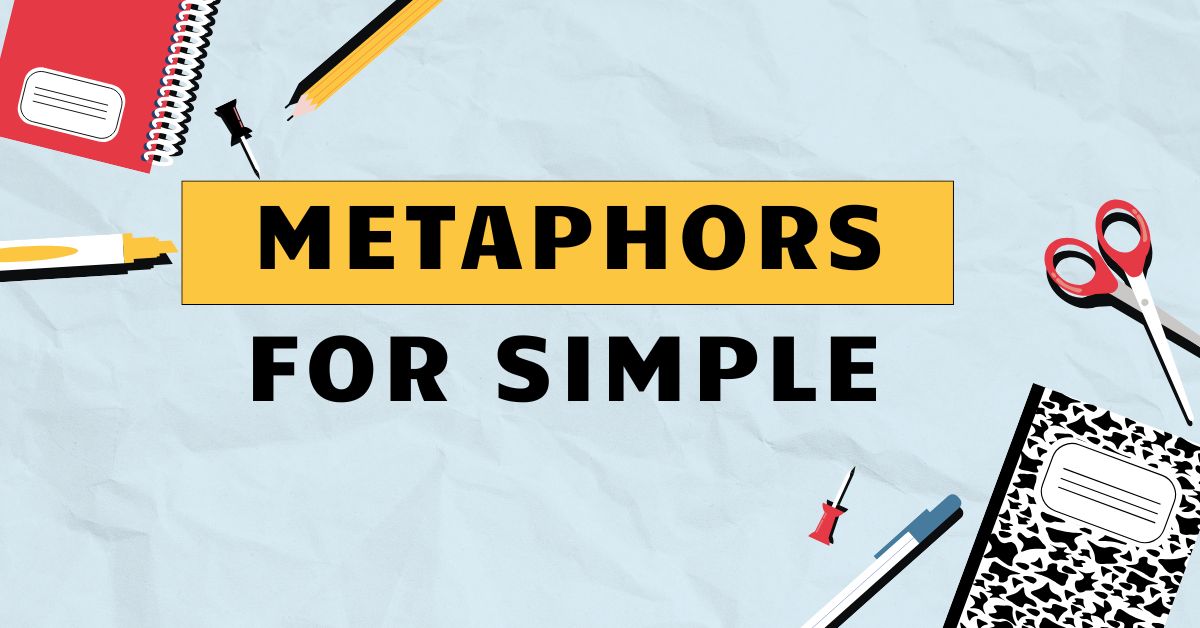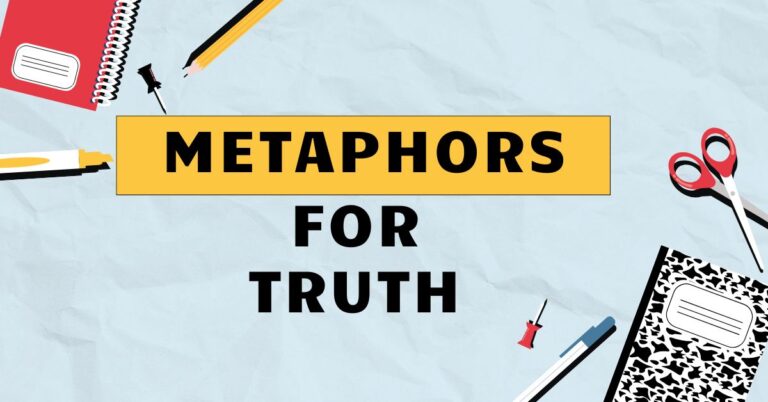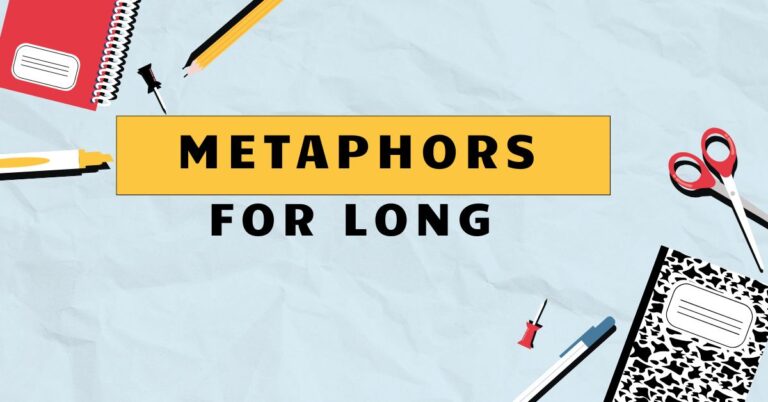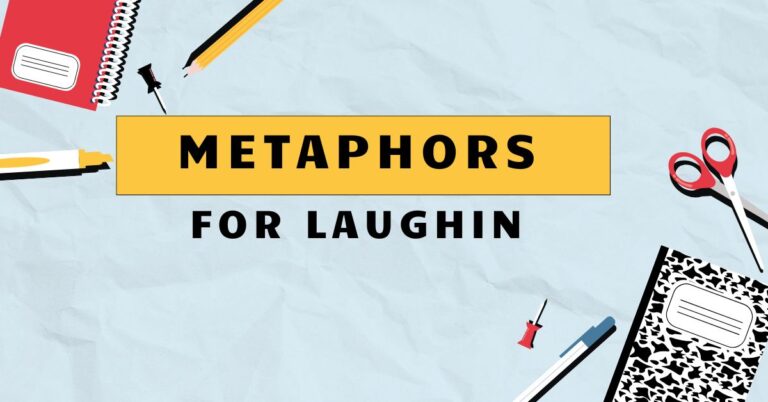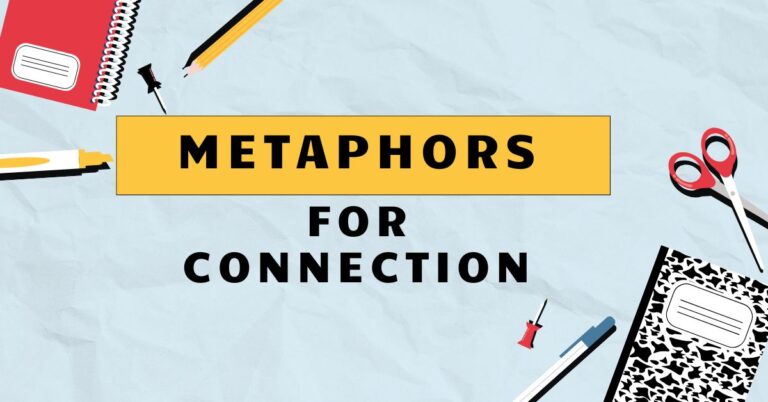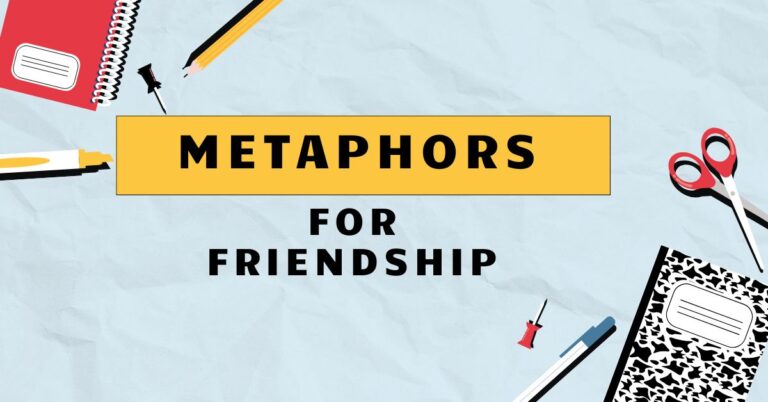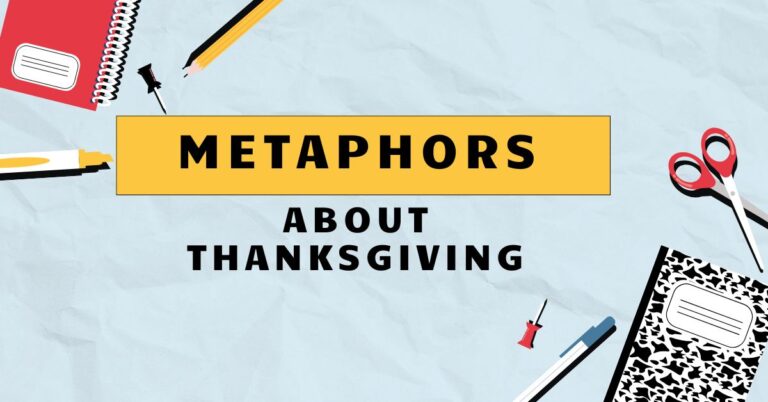35 Metaphors for Simple: Enhancing Language with Figurative Simplicity
Understanding metaphors for “simple” enriches our ability to communicate nuanced meanings beyond literal interpretations. This article explores how metaphors transform the concept of simplicity into vivid, relatable images, enhancing descriptive power and creative expression.
Mastering these metaphors is invaluable for students, writers, and anyone seeking to refine their English proficiency, enabling them to add depth and color to their language. This comprehensive guide will provide you with a deep understanding of how to use metaphors for “simple” effectively.
Table of Contents
- Introduction
- Definition of Metaphors for “Simple”
- Structural Breakdown of Metaphors
- Types and Categories of Metaphors for “Simple”
- Examples of Metaphors for “Simple”
- Usage Rules for Metaphors
- Common Mistakes with Metaphors
- Practice Exercises
- Advanced Topics in Metaphor Usage
- Frequently Asked Questions
- Conclusion
Definition of Metaphors for “Simple”
A metaphor is a figure of speech that directly compares two unrelated things, asserting that oneisthe other, or implying a strong similarity. Metaphors differ from similes, which use “like” or “as” to make a comparison.
Metaphors for “simple” are comparisons that equate simplicity with other concepts, often highlighting ease, clarity, purity, or lack of complexity. These metaphors serve to make the abstract idea of simplicity more concrete and relatable.
The function of these metaphors is to enhance understanding and add vividness to descriptions. By associating simplicity with familiar concepts, speakers and writers can evoke a deeper, more emotional response from their audience.
They are used across various contexts, from literature and poetry to everyday conversation and technical writing, to convey the value and impact of simplicity.
Structural Breakdown of Metaphors
Metaphors consist of two main elements: thetenorand thevehicle. The tenor is the subject to which metaphorical attributes are ascribed.
The vehicle is the object whose attributes are borrowed. In the case of metaphors for “simple,” “simple” is the tenor, and the various concepts used to describe it (e.g., “a clean slate,” “a walk in the park”) are the vehicles.
The effectiveness of a metaphor depends on the relationship between the tenor and the vehicle. A strong metaphor creates a clear, evocative connection that resonates with the audience.
This connection should be both insightful and easy to grasp, allowing the listener or reader to immediately understand the intended meaning. The structural relationship can be represented as: Simple = X, where X is the vehicle that embodies the quality of simplicity.
For example, in the metaphor “the solution was a breath of fresh air,” “solution” is indirectly being described as simple. “Simple” is the tenor, and “breath of fresh air” is the vehicle.
The breath of fresh air implies a refreshing and uncomplicated resolution. Understanding this structure helps in both interpreting and creating effective metaphors.
Types and Categories of Metaphors for “Simple”
Metaphors for “simple” can be categorized based on the specific aspect of simplicity they emphasize. Here are several key categories:
Simplicity as Clarity
These metaphors equate simplicity with being clear, understandable, and free from ambiguity. They emphasize the ease with which something can be comprehended.
Simplicity as Ease
This category focuses on the effortless nature of simplicity. These metaphors suggest that something simple requires little effort or skill to achieve or understand.
Simplicity as Purity
These metaphors link simplicity with a lack of contamination, complexity, or unnecessary additions. They suggest something is simple because it is unadulterated and straightforward.
Simplicity as Smallness
This category connects simplicity with a reduced scale or minimal components. It suggests that something is simple because it involves fewer elements or steps.
Simplicity as Naturalness
These metaphors associate simplicity with the inherent qualities of nature, suggesting that simple things are unforced and organic.
Examples of Metaphors for “Simple”
Here are various examples of metaphors for “simple,” organized by the categories discussed above.
Examples: Simplicity as Clarity
These metaphors highlight how simplicity makes things clear and easy to understand. The following table provides 25 examples.
| Metaphor | Explanation |
|---|---|
| The explanation was crystal clear. | Implies the explanation was transparent and easy to understand. |
| The instructions were as clear as day. | Suggests the instructions were unambiguous and straightforward. |
| The process was a clean window into the problem. | Indicates the process provided a clear and unobstructed view. |
| The solution was a bright light in a dark room. | Implies the solution illuminated the problem and made it understandable. |
| It was a transparent process. | Suggests there were no hidden steps or complexities. |
| Her instructions were a straight line. | The instructions were direct and unambiguous. |
| The concept was a clear bell. | The concept was distinct and easily understood. |
| His explanation was a map. | The explanation guided understanding clearly. |
| The idea was a simple blueprint. | The idea was easy to follow and well-defined. |
| Her approach was a spotlight on the issue. | The approach clearly highlighted the key aspects. |
| The answer was a shining beacon. | The answer was obvious and illuminating. |
| The steps were a clear path. | The steps were easy to follow and straightforward. |
| The method was a plain mirror. | The method reflected the issue without distortion. |
| The reasoning was a straight arrow. | The reasoning was direct and logical. |
| The plan was a see-through box. | The plan had no hidden elements or surprises. |
| The explanation was a peeled orange. | The explanation was stripped down to its essential parts. |
| The idea was a single thread. | The idea was focused and uncomplicated. |
| Her words were a clear stream. | Her words flowed easily and were easy to understand. |
| The concept was a pane of glass. | The concept was transparent and easily understood. |
| The instructions were a bright page. | The instructions were clearly written and easy to read. |
| The process was a well-lit room. | The process was easy to navigate and understand. |
| The solution was a simple key. | The solution easily unlocked the problem. |
| It was a decoded message. | It was easily understood after initial difficulty. |
| The directions were a straight shot. | The directions were direct and easy to follow. |
| His reply was a single word. | His reply was concise and to the point. |
Examples: Simplicity as Ease
These metaphors focus on the effortless nature of simplicity. Here are 25 examples showcasing ease.
| Metaphor | Explanation |
|---|---|
| The task was a walk in the park. | Implies the task was easy and required little effort. |
| It was as easy as pie. | Suggests the task was extremely simple and straightforward. |
| The solution was a piece of cake. | Indicates the solution was easily achieved. |
| The process was smooth sailing. | Implies the process was free from obstacles and difficulties. |
| It was a breeze. | Suggests the task was effortless and quick. |
| The problem was a snap to solve. | The problem was easily and quickly solved. |
| The test was child’s play. | The test was extremely easy. |
| It was as easy as ABC. | It was very basic and easy to understand. |
| The project was a cakewalk. | The project was effortless to complete. |
| The transition was seamless. | The transition was smooth and without any difficulties. |
| The repair was a quick fix. | The repair was easily and rapidly completed. |
| The adjustment was effortless. | The adjustment required no difficulty. |
| The setup was a plug and play. | The setup was simple and required no technical skill. |
| It was a cinch to understand. | It was very easy to grasp. |
| The change was a simple flick of a switch. | The change was easily implemented. |
| The maneuver was a gentle nudge. | The maneuver required minimal effort. |
| The upgrade was a one-click install. | The upgrade was easily installed. |
| The operation was a streamlined process. | The operation was efficient and easy to manage. |
| The task was a light lift. | The task required minimal effort. |
| The installation was a snap. | The installation was quick and easy. |
| The entry was a simple click. | The entry was easily accessed with one click. |
| The solution was a no-brainer. | The solution was obvious and easy to identify. |
| It was a piece of cake to implement. | It was easy to put into practice. |
| The task was a mere formality. | The task was easily accomplished with minimal effort. |
| The code was a smooth scroll. | The code was easy to read and understand. |
Examples: Simplicity as Purity
These metaphors draw a parallel between simplicity and a state of being unadulterated or pure. The following table provides 25 examples.
| Metaphor | Explanation |
|---|---|
| The design was a clean slate. | Implies the design was uncluttered and free from unnecessary elements. |
| The solution was distilled to its essence. | Suggests the solution was reduced to its most fundamental components. |
| The concept was stripped down to its bare bones. | Indicates the concept was simplified to its essential structure. |
| It was a pure and unadulterated idea. | Implies the idea was free from any contamination or unnecessary additions. |
| The explanation was like filtered water. | Suggests the explanation was clear and free from impurities. |
| The program was a blank canvas. | The program was pristine and ready for use. |
| The approach was a clear stream of thought. | The approach was pure and untainted by biases. |
| The method was a clean cut. | The method was precise and without unnecessary complexity. |
| The strategy was a pure distillation of ideas. | The strategy was refined to its purest form. |
| The data was raw and unrefined. | The data was simple and had not been processed. |
| The statement was a truth serum. | The statement revealed the pure, unvarnished truth. |
| The design was minimal and unadorned. | The design was simple and without unnecessary embellishments. |
| The solution was a return to basics. | The solution was a simplified approach based on fundamental principles. |
| The idea was a breath of fresh mountain air. | The idea was pure and invigorating. |
| The code was lean and efficient. | The code was simple and optimized for performance. |
| The process was a clear spring. | The process was pure and refreshing. |
| The answer was a distilled truth. | The answer was the purest and most fundamental truth. |
| The approach was a minimalist design. | The approach was simple and uncluttered. |
| The method was a clean sweep. | The method eliminated all unnecessary complexities. |
| The strategy was a pure play. | The strategy was straightforward and without hidden agendas. |
| The intention was a clear heart. | The intention was honest and without ulterior motives. |
| The solution was a simple reset. | The solution was a straightforward return to a clean state. |
| The message was unvarnished truth. | The message was direct and honest. |
| The approach was a bare-bones strategy. | The approach was reduced to its essential elements. |
| The design was a blank page. | The design was open and unburdened by preconceived notions. |
Examples: Simplicity as Smallness
These metaphors equate simplicity with being small, concise, or involving few elements. Here are 25 examples reflecting smallness.
| Metaphor | Explanation |
|---|---|
| The change was a minor adjustment. | Implies the change was small and insignificant. |
| It was a small step in the right direction. | Suggests the progress was minimal but positive. |
| The task was a micro-project. | Indicates the task was small in scale and scope. |
| The solution was a single line of code. | Implies the solution was concise and minimal. |
| It was a drop in the bucket. | Suggests the contribution was small but meaningful. |
| The error was a tiny glitch. | The error was minimal and easily corrected. |
| The update was a small patch. | The update was minor and addressed specific issues. |
| The correction was a minor tweak. | The correction was a small adjustment. |
| The task was a small detail. | The task was insignificant compared to the whole. |
| The change was a slight shift. | The change was barely perceptible. |
| The problem was a minor hiccup. | The problem was small and temporary. |
| The upgrade was a small increment. | The upgrade was a minor improvement. |
| The contribution was a small token. | The contribution was minimal but appreciated. |
| The task was a short hop. | The task was quick and easy to complete. |
| The fix was a small band-aid. | The fix was a temporary and minor solution. |
| The change was a light touch. | The change was subtle and minimal. |
| The task was a quick sprint. | The task was short and intense. |
| The problem was a small bump in the road. | The problem was a minor obstacle. |
| The addition was a small footnote. | The addition was a minor and supplementary detail. |
| The change was a small ripple. | The change was minimal and had a limited effect. |
| The task was a short cycle. | The task was quick and repetitive. |
| The correction was a fine adjustment. | The correction was precise and minimal. |
| The improvement was a small gain. | The improvement was incremental and minor. |
| The task was a quick scan. | The task was a brief overview. |
| The error was a small oversight. | The error was a minor mistake. |
Examples: Simplicity as Naturalness
These metaphors connect simplicity with the inherent qualities of nature. Here are 25 examples showing naturalness.
| Metaphor | Explanation |
|---|---|
| The solution flowed like a river. | Implies the solution was natural and effortless. |
| It was as natural as breathing. | Suggests the action was instinctive and uncomplicated. |
| The design was organic and unforced. | Indicates the design was naturally evolved and not artificial. |
| The process was like watching a plant grow. | Implies the process was gradual and natural. |
| It was a natural extension of the previous work. | Suggests the new work was a logical and seamless continuation. |
| The idea was a seed that grew. | The idea germinated naturally and developed over time. |
| The change was as gentle as the breeze. | The change was subtle and non-disruptive. |
| The solution was like sunlight. | The solution was natural and illuminating. |
| The approach was rooted in common sense. | The approach was based on natural and intuitive understanding. |
| The process was like a meandering stream. | The process flowed naturally and without constraint. |
| The idea was as pure as a mountain spring. | The idea was pristine and untainted. |
| The method was like a natural instinct. | The method was intuitive and effortless. |
| The solution was a natural fit. | The solution was perfectly suited to the problem. |
| The process was like the changing seasons. | The process was cyclical and natural. |
| The idea was a natural evolution. | The idea developed naturally over time. |
| The change was as smooth as stone. | The change was natural and seamless. |
| The solution was like a breath of fresh air. | The solution was refreshing and natural. |
| The approach was as clear as a mountain lake. | The approach was pure and transparent. |
| The process was like a growing tree. | The process was organic and developed over time. |
| The idea was a natural consequence. | The idea was a logical and expected outcome. |
| The change was as effortless as gravity. | The change was natural and inevitable. |
| The solution was like a blooming flower. | The solution was beautiful and natural. |
| The approach was as grounded as the earth. | The approach was practical and realistic. |
| The process was like a flowing tide. | The process was natural and unstoppable. |
| The idea was a natural revelation. | The idea was a clear and intuitive insight. |
Usage Rules for Metaphors
Using metaphors effectively requires careful consideration of several rules:
- Clarity: The metaphor should be easily understood. Avoid obscure or overly complex comparisons.
- Relevance: The vehicle should be closely related to the tenor. The attributes being transferred should make sense in the context.
- Originality: While common metaphors can be effective, original metaphors can be more impactful. Strive for fresh and creative comparisons.
- Consistency: Maintain consistency in the metaphor throughout the text. Avoid mixing metaphors that clash or create confusion.
- Appropriateness: Consider the audience and the context. A metaphor that works well in a literary context may not be appropriate in a technical report.
Common Mistakes with Metaphors
Here are some common mistakes to avoid when using metaphors:
| Mistake | Incorrect Example | Correct Example |
|---|---|---|
| Mixed Metaphors: Combining unrelated metaphors. | The project was a walk in the park that hit a brick wall. | The project was a walk in the park. OR The project hit a brick wall. |
| Clichéd Metaphors: Using overused and unoriginal metaphors. | The task was as easy as pie. | The task was a smooth glide. |
| Inappropriate Metaphors: Using metaphors that don’t fit the context. | The code was a blooming rose. | The code was a streamlined engine. |
| Unclear Metaphors: Using metaphors that are difficult to understand. | The process was a quantum leap of simplicity. | The process was a streamlined system. |
Practice Exercises
Complete the following exercises to practice using metaphors for “simple.”
| Exercise | Question | Answer |
|---|---|---|
| 1 | Complete the metaphor: “The explanation was as clear as __________.” | day |
| 2 | Create a metaphor for “simple” using the word “breeze.” | The task was a breeze. |
| 3 | Rewrite the sentence using a metaphor: “The solution was easy to find.” | The solution was a low-hanging fruit. |
| 4 | Identify the tenor and vehicle in the metaphor: “The design was a clean slate.” | Tenor: Simple design; Vehicle: Clean slate |
| 5 | Complete the metaphor: “The instructions were a __________ path.” | Clear |
| 6 | Create a metaphor for “simple” using the word “filter.” | The process was as pure as filtered water. |
| 7 | Rewrite the sentence using a metaphor: “The solution was obvious.” | The solution was a shining beacon. |
| 8 | Identify the tenor and vehicle in the metaphor: “The code was a streamlined engine.” | Tenor: Simple code; Vehicle: Streamlined engine |
| 9 | Complete the metaphor: “The task was a __________ in the park.” | Walk |
| 10 | Create a metaphor for “simple” using the word “seed.” | The idea was a seed that grew naturally. |
Advanced Topics in Metaphor Usage
Advanced learners can explore more complex aspects of metaphor usage, such as:
- Extended Metaphors: Developing a single metaphor over an entire piece of writing.
- Submerged Metaphors: Subtle metaphors that are not explicitly stated but implied through language.
- Conceptual Metaphors: Underlying metaphors that shape our understanding of abstract concepts.
- Dead Metaphors: Metaphors that have become so common that they are no longer recognized as figurative language.
Further exploration into these areas will help enhance your ability to use metaphors with greater sophistication and nuance.
Frequently Asked Questions
- What is the difference between a metaphor and a simile?
A metaphor directly equates two things, while a simile uses “like” or “as” to make a comparison. For example, “The solution was a breath of fresh air” is a metaphor, while “The solution was like a breath of fresh air” is a simile.
- Why use metaphors in writing?
Metaphors add vividness, depth, and emotional resonance to writing. They can make abstract concepts more concrete and relatable, enhancing understanding and engagement.
- How can I create original metaphors?
Look for unexpected connections between unrelated things. Consider the qualities of the subject you want to describe and brainstorm objects or concepts that share those qualities. Experiment with different combinations until you find a metaphor that feels fresh and insightful.
- What are some common mistakes to avoid when using metaphors?
Avoid mixed metaphors (combining unrelated comparisons), clichéd metaphors (overused expressions), and unclear metaphors (comparisons that are difficult to understand).
- How do I know if a metaphor is effective?
An effective metaphor should be clear, relevant, and evocative. It should resonate with your audience and enhance their understanding of the subject.
- Can a metaphor be too complex?
Yes, a metaphor can be too complex if it requires too much effort to understand or if the connection between the tenor and vehicle is too obscure. The best metaphors are insightful but still easily grasped.
- How do metaphors enhance communication?
Metaphors enhance communication by making abstract ideas more concrete and relatable. They can evoke emotions and create vivid images in the minds of the audience, making the message more memorable and impactful.
- What role do metaphors play in persuasive writing?
In persuasive writing, metaphors can be used to frame arguments in a compelling way, influence the audience’s perception, and create an emotional connection. They can make arguments more persuasive by associating them with familiar and emotionally charged concepts.
- How can I improve my ability to understand and interpret metaphors?
Practice reading widely and paying attention to the figurative language used by skilled writers. Analyze the connections between the tenor and vehicle in different metaphors and consider the effect they have on the reader.
- Are there cultural differences in the interpretation of metaphors?
Yes, cultural background can influence the interpretation of metaphors. Some metaphors may be more meaningful or relevant in certain cultures than others. It’s important to be aware of these differences when communicating with a diverse audience.
Conclusion
Mastering the use of metaphors for “simple” is a valuable skill that can significantly enhance your communication abilities. By understanding the structure, types, and usage rules of these metaphors, you can add depth, clarity, and creativity to your writing and speaking.
Remember to avoid common mistakes and practice regularly to refine your skills. With consistent effort, you can unlock the power of figurative language and express yourself with greater precision and impact.
Continue to explore different metaphors and experiment with their usage in various contexts. The more you practice, the more natural and intuitive your metaphorical language will become.
Embrace the challenge and enjoy the journey of discovering the rich possibilities of figurative expression. Happy writing!

